Have you ever wondered why your elegant Bombay cat, with its pristine black coat and mesmerizing gold eyes, seems like a magnet for fleas despite your efforts? Flea infestations in Bombay Cats can turn your sleek and affectionate companion into an itchy, uncomfortable mess. Keeping Bombay Cats flea-free is achievable with the right knowledge and precise prevention tips.
These medium-sized felines, resembling miniature panthers, are not only intelligent and charming but can live up to 20 years or more when well-cared for. This longevity makes safeguarding their health through proactive measures like flea prevention an essential part of their care regime.
Key Takeaways
- Understanding your Bombay cat’s unique characteristics is crucial for effective flea prevention.
- Regular grooming and maintenance can help in keeping Bombay Cats flea-free.
- Implementing veterinarian-recommended flea treatments ensures your pet’s health and happiness.
- Maintaining a clean environment is essential to prevent flea infestations in Bombay cats.
- Monitor your cat for early signs of flea infestation and act quickly to mitigate issues.
Understanding the Bombay Cat and Its Unique Needs
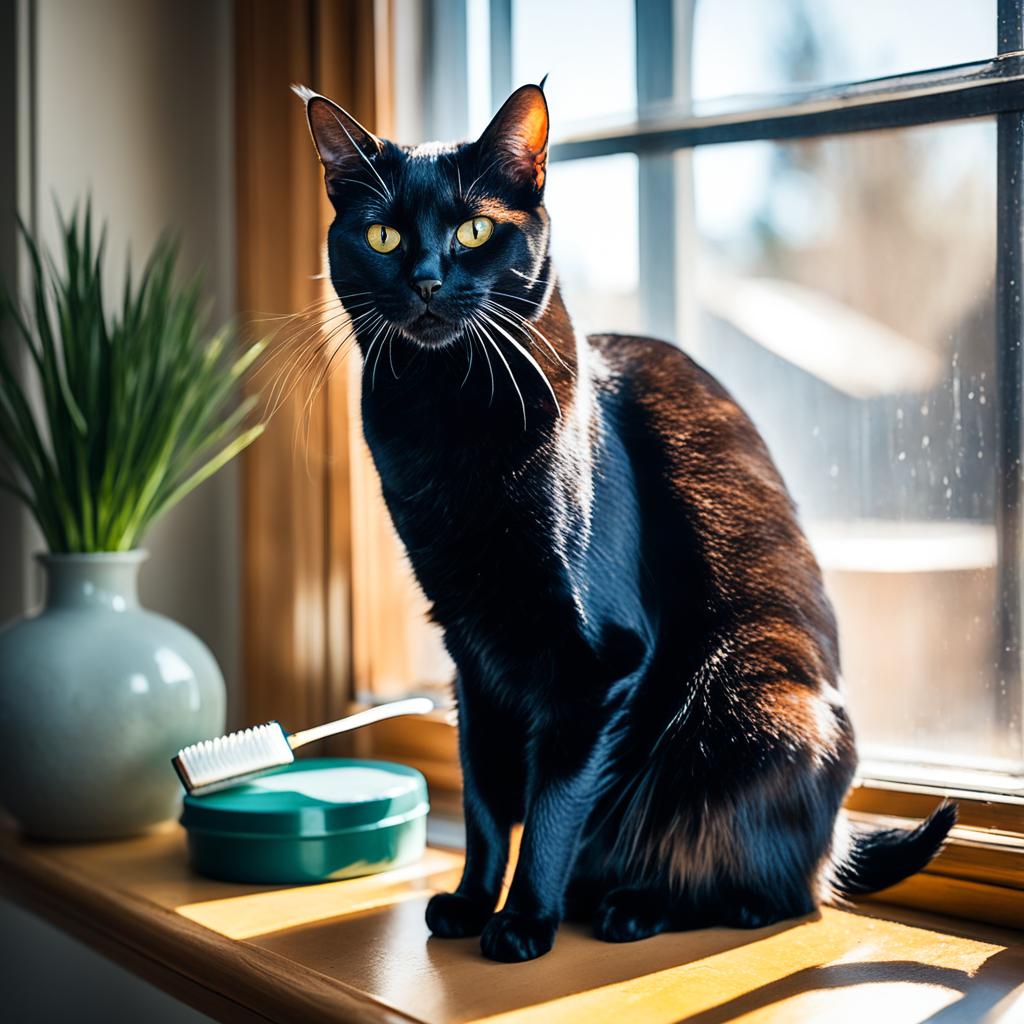
With their gleaming, short black fur and copper-like eyes, Bombay cats indeed have a panther-like appearance. Understanding the distinctive needs of these captivating felines can help you ensure they thrive in your home.
Physical Characteristics
The Bombay cat size and shape are quite unique. They are medium-sized with males typically weighing between 8 and 10 pounds, while females weigh between 6 and 8 pounds. This breed’s distinctive physical characteristics include a sleek black coat, round heads, and striking, gleaming eyes that range from copper to gold. These features contribute to their exotic, panther-like appeal.
Personality and Temperament
Bombay cats are known for their intelligence and outgoing nature. They thrive in dynamic households and have easy-going temperaments that adapt well to various environments. These felines are not just about looks—they are also incredibly sociable and enjoy interacting with their human family members.
Care and Maintenance
When it comes to care and maintenance, the Bombay cat’s low-shedding coat requires minimal grooming, making coat care for Bombay cats relatively simple. Weekly brushing is sufficient to keep their sleek fur in top shape. In addition to their coat, regular dental care and monthly nail trimmings are essential.
Feeding your Bombay high-quality commercial cat food, either through controlled portions or careful free-feeding, is vital for maintaining optimum health. Activity levels may vary from being playful in their youth to more relaxed as they age, but mental stimulation remains crucial throughout their life.
Below is a quick comparison table of physical characteristics between male and female Bombay cats:
| Characteristic | Male | Female |
|---|---|---|
| Weight | 8-10 pounds | 6-8 pounds |
| Coat | Short, sleek black fur | |
| Eye Color | Copper to gold | |
Common Problems with Fleas in Bombay Cats
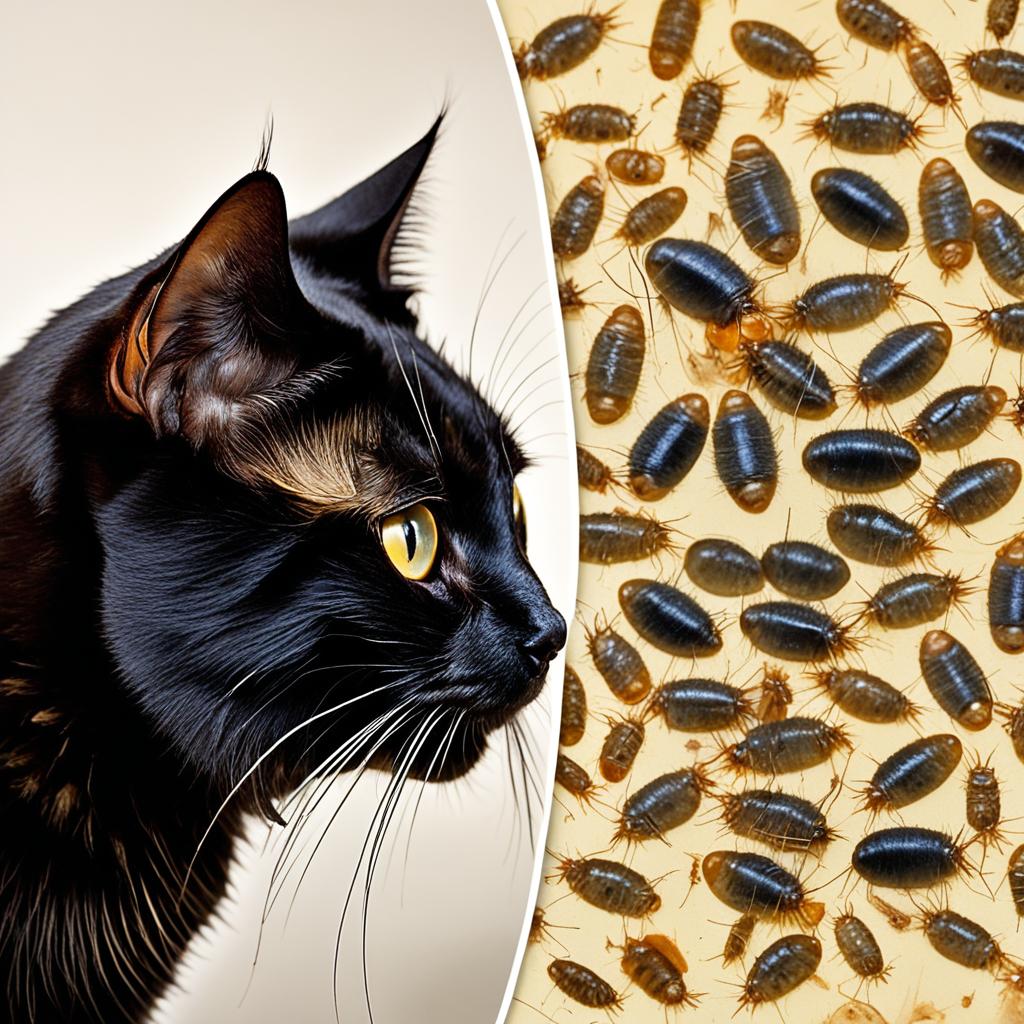
When it comes to dealing with fleas on your Bombay cat, understanding their lifecycle and behavior, recognizing the signs of an infestation, and knowing the health implications for your furry friend are crucial. Fleas are notorious for their relentless lifecycle and the issues they can cause if not promptly addressed.
Lifecycle and Behavior of Fleas
The lifecycle and behavior of fleas on cats can be a relentless cycle if left unchecked. These pesky parasites go through four distinct stages: egg, larva, pupa, and adult. Fleas thrive in warm, humid environments, making your Bombay cat’s cozy fur the perfect hideout. The adult fleas feast on your cat’s blood and lay eggs, which fall off into the environment, perpetuating the cycle.
Signs and Symptoms of Flea Infestation
Detecting the signs of flea infestation in cats is vital for early intervention. Watch out for excessive scratching, biting, or grooming, as these are typical responses to flea bites. Additionally, you might notice hair loss or red, irritated skin. The presence of flea dirt (tiny black flakes) in your cat’s fur is another telltale sign. Regularly inspecting your Bombay cat for these symptoms will help you catch infestations early.
Implications of Flea Infestations on Your Cat’s Health
The health implications of fleas on Bombay cats extend beyond mere discomfort. Flea bites can cause severe skin irritations and allergies, leading to hotspots and secondary infections. In severe cases, a high flea burden can lead to anemia due to blood loss. Furthermore, fleas are notorious for transmitting tapeworms, adding another layer of health risk to your beloved pet. Therefore, prompt and effective control measures are essential to protect your Bombay cat’s well-being.
| Stage | Characteristics | Impact on Cats |
|---|---|---|
| Egg | Laid in the environment, hatch within days | None while in egg stage, eventually contribute to infestation |
| Larva | Feed on organic matter, avoid light | None directly, prepares for pupation |
| Pupa | Develop in a protective cocoon | Hidden stage, difficult to eliminate |
| Adult | Feeds on blood, lays eggs | Causes itching, skin irritation, potential for anemia |
Preventing Flea Infestations in Bombay Cats
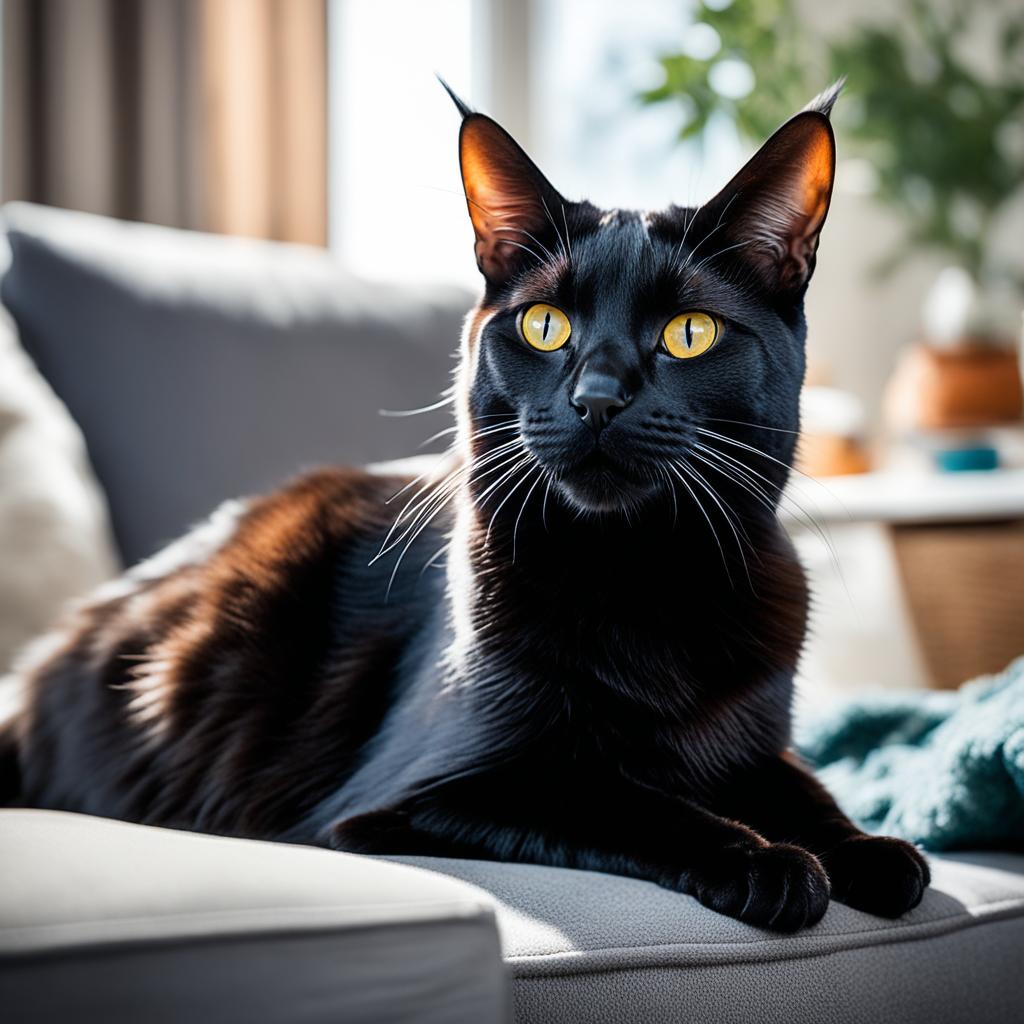
Preventing flea infestations in Bombay Cats involves employing a multi-pronged approach. One of the most effective flea prevention for Bombay Cats is using veterinarian-recommended flea treatments. Given the wide range of products available, you should consider topical solutions and oral medications to create a protective barrier.
Consistency is key. Ensure you maintain a clean environment by vacuuming regularly and washing pet bedding. A clean home can significantly curb the chances of flea infestation. Another important step in preventing flea infestations in Bombay Cats is limiting their exposure to outdoor environments where fleas are prevalent. You can also place a flea collar on your Bombay cat for added protection.
Moreover, regular visits to the vet can help you monitor any early signs of infestation and carry out preventative measures. The veterinarian can also provide tailored advice on the best flea prevention products suited for your Bombay cat. By adopting these methods, you’re not just looking after your adorable feline but also ensuring effective flea prevention for Bombay Cats.
- Use veterinarian-recommended treatments
- Maintain a clean living environment
- Limit outdoor exposure
- Regular veterinary check-ups
Bombay Cat Flea Control Strategies

Keeping your sleek Bombay cat free from fleas involves a coordinated approach to various treatment methods. Here, we’ll delve into topical treatments, oral medications, flea collars, and sprays that serve as essential tools in battling these pesky intruders.
Topical Treatments
Topical flea treatments for cats are one of the most commonly used methods for controlling flea infestations. These solutions are applied directly to your Bombay cat’s skin, typically between the shoulder blades, where they spread through the skin’s oils and offer protection. Popular brands like Frontline and Advantage are known for their efficacy and safety, ensuring that your feline friend remains comfortable and flea-free.
Oral Medications
If you’re looking for an internal approach to flea control, oral flea medications for Bombay Cats might be the ideal solution. These medications work by getting into your cat’s bloodstream, which then targets fleas when they bite. Products such as Comfortis and Capstar are popular choices. Oral treatments can be conveniently mixed with their food, making them easy to administer and very effective at breaking the flea lifecycle.
Flea Collars and Sprays
Flea collars and sprays add an extra layer of defense against fleas. Flea collars release insecticides over time, offering long-term protection. Brands like Seresto provide collars that last for several months, making them a low-maintenance option. On the other hand, flea sprays can be used for immediate relief, ideal for treating both the Bombay cat and its living environment. When combined, these control strategies can ensure your cat remains healthy and unbothered by fleas.
Combining these Bombay Cat flea control strategies—using topical flea treatments for cats, oral flea medications for Bombay Cats, along with flea collars and sprays—can significantly reduce the risk of infestation. Consistent application and veterinary guidance are key in keeping your cat happy and flea-free.
Effective Flea Prevention for Bombay Cats
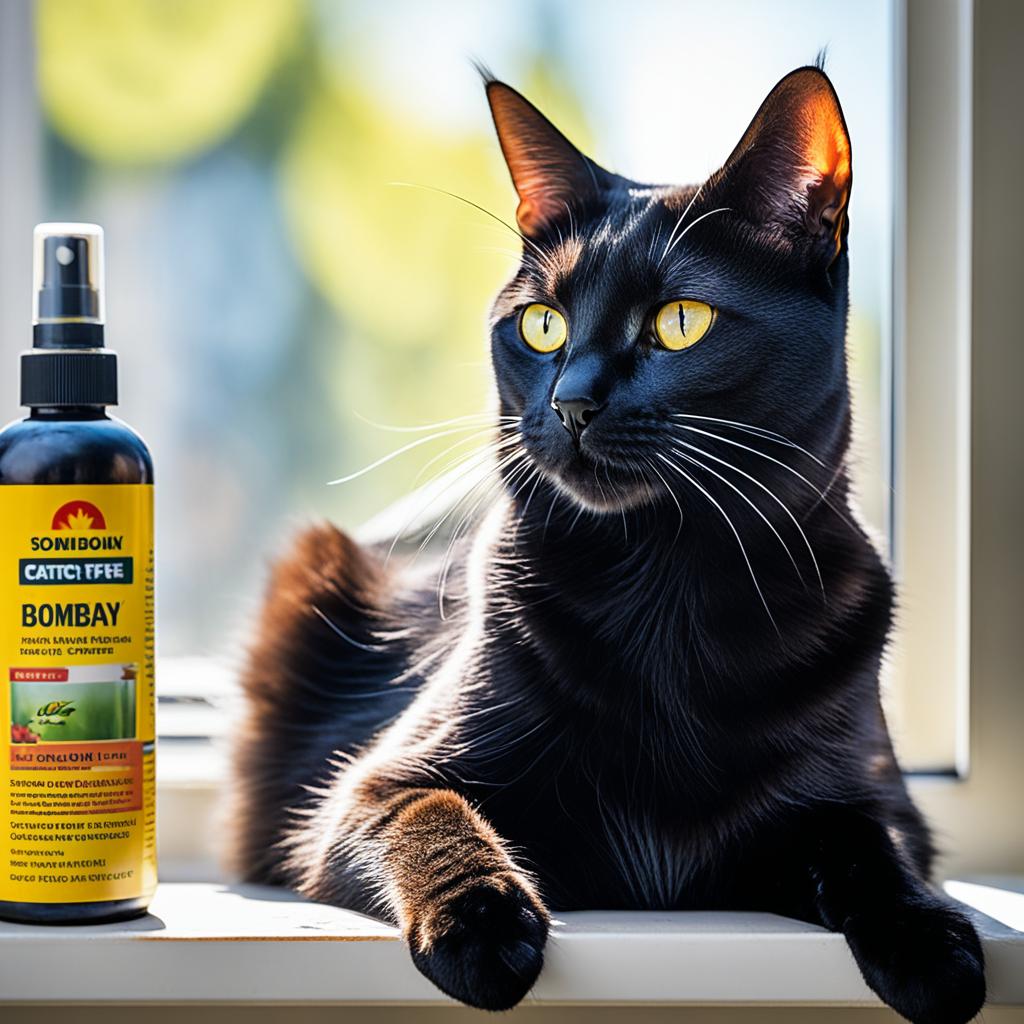
Ensuring effective flea prevention for Bombay cats involves a well-rounded routine that targets both the environment and the cat itself. By focusing on cleanliness and safe insecticide use, you can maintain a flea-free household.
Routine Cleaning and Maintenance
Integrating daily routine cleaning tips for Bombay cat owners can drastically reduce the chances of flea infestations. Start by regularly vacuuming all surfaces, especially those your cat frequents.
- Sweep and vacuum floors and upholstery daily.
- Wash pet bedding at least once a week in hot water.
- Use a steam cleaner on carpets and furniture to kill any possible flea eggs or larvae.
Consistency is key, so make these tasks a regular part of your cleaning routine.
Using Cat-Safe Insecticides
For an additional layer of defense, consider using cat-safe insecticides for flea prevention. These products are designed to be effective against fleas while being gentle on your Bombay cat.
- Select products that are specifically labeled as safe for use around cats.
- Apply according to the manufacturer’s guidelines to avoid any potential harm.
- Consider both topical and environmental treatments for comprehensive coverage.
By maintaining a regular cleaning schedule and using environmentally safe insecticides, you can effectively prevent fleas and ensure your Bombay cat’s well-being.
Environment Cleaning Tips to Keep Your Home Flea-Free
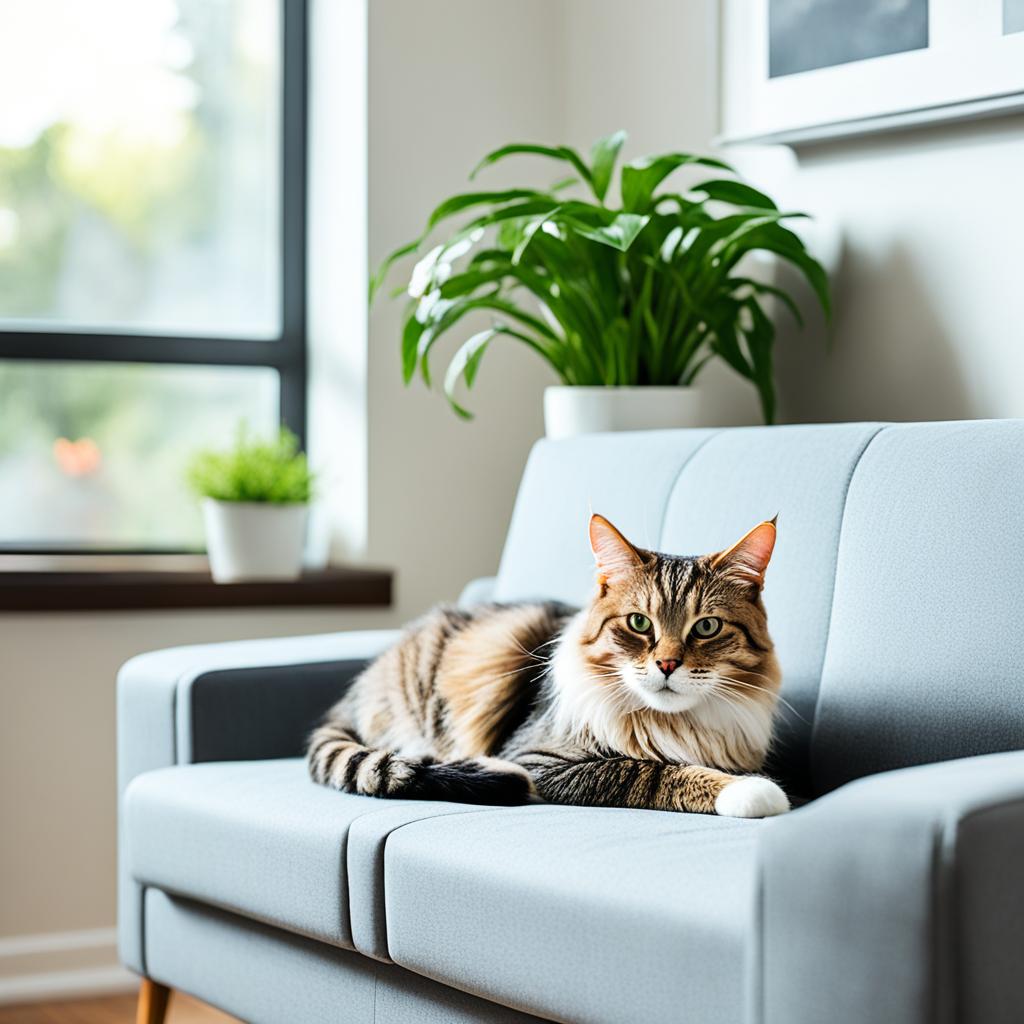
Keeping your home flea-free is essential for your Bombay cat’s comfort and health. Effective cleaning strategies not only tackle existing fleas but also prevent infestations from recurring. Let’s dive into some practical home cleaning tips for flea prevention.
Vacuuming and Washing
Regular vacuuming is your first line of defense against fleas. Make sure to focus on areas where your cat likes to lounge, such as carpets, upholstery, and pet beds. Washing fabrics, including cat bedding and your own linens, in hot water can help eradicate flea eggs and larvae. Consistency is key, so aim to vacuum and wash fabrics at least once a week.
Using Baking Soda and Salt
Using baking soda for flea control is a widely discussed method, though its effectiveness is up for debate. However, sprinkling a mixture of baking soda and salt on carpets can help dehydrate flea eggs and larvae. Let it sit for a few hours before vacuuming thoroughly. This method is safe around cats and adds an extra layer to your flea prevention arsenal.
Steam Cleaning
Steam cleaning to prevent flea infestations can be particularly effective. The high temperatures (over 200 degrees Fahrenheit) are lethal to fleas at all lifecycle stages. Consider steam cleaning carpets, rugs, and even certain types of furniture regularly. This method not only kills fleas but also eliminates allergens, making your home a cleaner, healthier environment.
| Cleaning Method | Purpose | Frequency |
|---|---|---|
| Vacuuming | Remove adult fleas, eggs, and larvae | Weekly |
| Washing Fabrics | Kill fleas and eggs | Weekly |
| Baking Soda and Salt | Dehydrate flea eggs and larvae | As needed |
| Steam Cleaning | Kill fleas at all lifecycle stages | Monthly |
How to Prevent Bombay Cat Fleas?
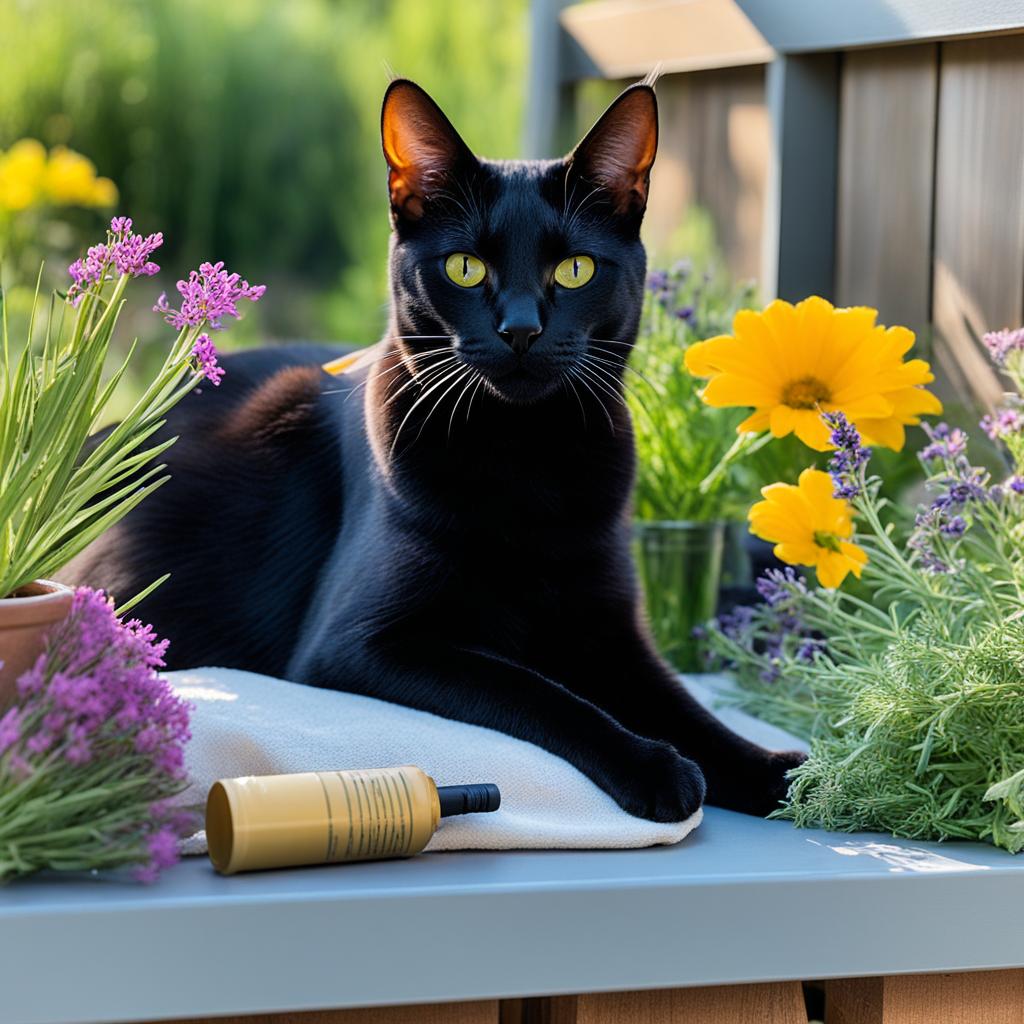
To effectively manage and address How to Prevent Bombay Cat Fleas?, it’s essential to understand the battleground basics. The proactive approach is your best ally in preventing flea infestations in Bombay Cats. Staying vigilant and employing a combination of strategies ensures success.
Start off by integrating veterinarian-recommended flea treatments into a regular routine. Topical treatments, applied as per your vet’s advice, form the primary line of defense. Often these come in easy-to-apply pipettes, delivering continuous protection for up to a month.
Incorporating oral medications can bolster this external barrier. These meds, when administered as directed, become a systemic shield, making your Bombay cat less desirable to fleas.
Cleanliness, however, remains the unsung hero in flea prevention. Regularly vacuuming carpets, furniture, and especially your cat’s favorite lounging spots can drastically cut down the risk of flea infestations. Don’t neglect laundering your cat’s bedding weekly with hot water.
Declaring a war on fleas? Your best strategy is a two-pronged one:
- Environmental Hygiene: Vacuum upholstery, wash pet bedding, and keep the dwelling areas spotless.
- Medical Prevention: Consistent use of topical and oral preventive treatments.
Even as you chase and annihilate these tiny pests, remember the golden rule: Consult your vet periodically to tailor the flea prevention plan to your Bombay cat’s specific needs. Adjust treatments as necessary and ensure no flea gains a foothold on your sleek feline friend.
Below is a quick cheat sheet for your convenience:
| Strategy | Action Steps |
|---|---|
| Veterinarian Advice | Consult your vet for the best flea treatment and follow-up regimes. |
| Topical Treatments | Apply monthly, per vet recommendations. |
| Oral Medications | Administer as prescribed for internal protection. |
| Environmental Cleaning | Vacuum, launder, and clean regularly. |
By combining these efforts, you are setting the stage for successfully preventing flea infestations in Bombay Cats. Keep it clean, stay sharp, and watch those fleas flee!
Consulting Your Veterinarian

When it comes to fighting off those pesky Bombay cat fleas, consulting veterinarians for flea prevention is the ace up your sleeve. Veterinarians can assess your feline’s age, weight, and overall health to recommend the most effective treatments. This personalized advice ensures you’re not just winging it but hitting the bullseye with targeted strategies.
The advantage of consulting veterinarians for flea prevention is the tailored approach they offer. They can suggest the best veterinarian-recommended flea treatments, making sure your cat gets the top-notch care it deserves. Plus, they keep you updated with the latest advancements in flea prevention, ensuring you’re always one step ahead of those tiny invaders.
With a veterinarian’s guidance, you can craft a preventive plan unique to your cat’s needs. Whether you’re discussing administration methods or monitoring your cat’s reaction to treatments, partnering with a pro makes all the difference. Consulting veterinarians for flea prevention not only keeps your Bombay cat flea-free but also gives you peace of mind, knowing your pet is protected by the best methods available.
Conclusion
Effective flea prevention for Bombay Cats involves more than just an occasional treatment; it requires a deep understanding of both the cat breed and flea behavior. A comprehensive strategy, combining veterinarian-recommended treatments with diligent routine care, is the key to keeping your Bombay cat healthy and flea-free.
Remember that prevention is far better than cure. Regular cleaning, using cat-safe insecticides, and employing topical and oral treatments can provide robust protection against fleas. Consistency is crucial; maintaining a clean environment and adhering to a regular treatment schedule will help avert infestations before they start.
Incorporating these Bombay Cat Fleas prevention tips into your pet care routine doesn’t just safeguard your feline friend—it also ensures a harmonious, pest-free home. By staying proactive and informed, you’ll keep those pesky fleas at bay and guarantee a happy, healthy life for your sleek, majestic Bombay cat.
FAQ
How can I prevent flea infestations in my Bombay cat?
Preventing flea infestations in Bombay cats involves using veterinarian-recommended flea treatments, maintaining a clean living environment, and regular monitoring. Utilizing a combined approach of topical solutions, oral medications, and routine cleaning helps keep your cat flea-free.
What are the signs and symptoms of flea infestation in Bombay cats?
Signs of flea infestation in Bombay cats include excessive scratching, hair loss, visible flea dirt in the cat’s coat, and in severe cases, anemia or allergic reactions. Regular inspection is crucial to catch these symptoms early.
How often should I use preventive flea treatments for my Bombay cat?
Preventive flea treatments should be applied as per the instructions provided by your veterinarian or product guidelines. Typically, topical treatments are applied monthly, while other methods may have different intervals, so always follow professional advice.
Are there any specific flea control strategies particularly effective for Bombay cats?
Yes, effective flea control strategies for Bombay cats include a mix of topical treatments, oral medications, flea collars, and sprays. These combined methods help break the flea lifecycle and offer comprehensive protection.
How crucial is routine cleaning and maintenance in preventing fleas?
Routine cleaning and maintenance are vital in preventing fleas. Regular vacuuming, laundering pet beds, and using cat-safe insecticides significantly reduce flea populations and interrupt their lifecycle, contributing to a healthier environment for your Bombay cat.
Can baking soda and salt help in flea prevention?
While baking soda and salt are often mentioned as flea control agents, they are not highly effective against fleas. However, they are safe to use around cats and can aid in your overall cleaning routine.
How can steam cleaning help prevent flea infestations?
Steam cleaning can be effective in flea prevention due to the high heat, which can kill fleas at various life stages. Regular steam cleaning of carpets and fabrics helps manage infestations and minimize the chances of recurrences.
Why is consulting a veterinarian essential for flea prevention in Bombay cats?
Consulting a veterinarian is essential as they can provide tailored advice based on your cat’s health, age, and weight. They recommend the most effective treatments and help monitor your cat’s response, ensuring optimal protection against fleas.




